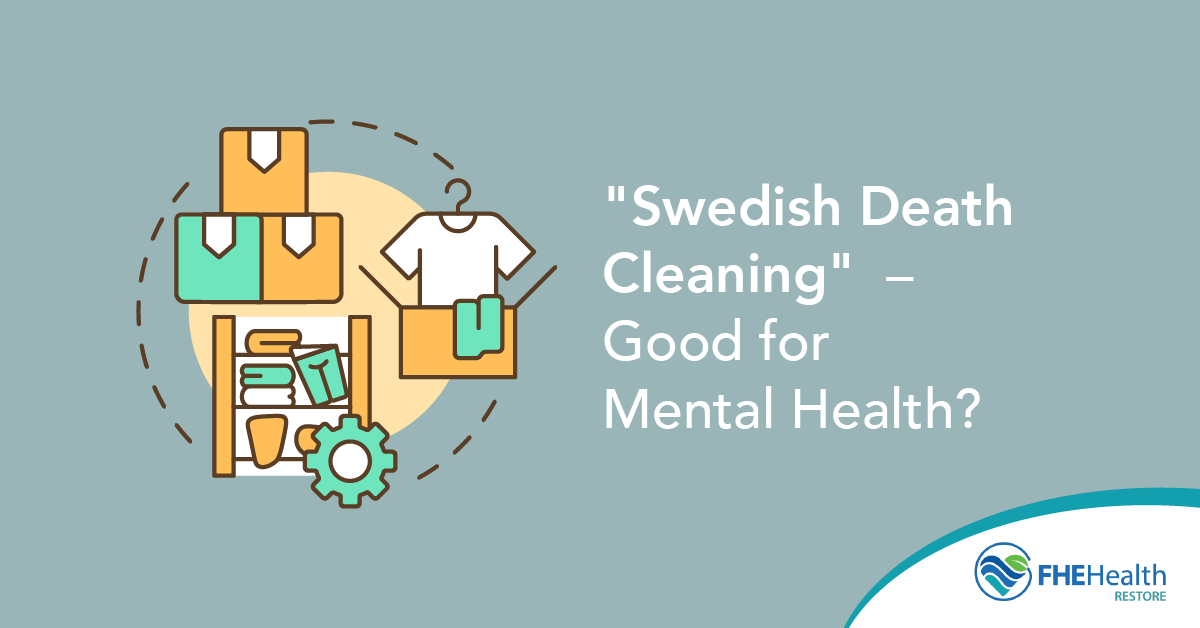With Americans stressing over packed closets, garages and storage units across the country, could döstädning, or Swedish death cleaning, be the answer? This unique ritual encourages each person to sort through, minimize, and allocate belongings to spare families after a loved one passes away. Considerate and pragmatic, this so-called death cleaning embraces letting go of physical items as well as the emotional impacts of storing them indefinitely.
What Is Swedish Death Cleaning?
While grief cleaning sounds a little morbid at a glance, the term is more tongue-in-cheek than solemn. It simply calls attention to the idea that it’s easy to end up with layers and layers of personal items over a lifetime, many of which are likely unneeded in day-to-day life.
Scandinavian death cleaning addresses the battle for space — physical and mental — that all those items take up. According to a 2024 StorageCafe report, 1 in 3 Americans keeps a storage unit, which means that for a third of the country, that stuff is likely winning.
The Cultural Origins and Philosophy Behind the Practice
Practicality is very important to Swedes. It shows up in everything from daily life to furniture design, so it’s no surprise they get a jump on after death cleaning in their golden years. Going through your own items helps eliminate clutter, and part of the Swedish approach is consciously passing on useful items to younger counterparts.
Swedish death cleaning is usually taken up in your 60s with an eye towards hand-me-down recipients in their 20s. Rather than remaining a source of stress and clutter, these still-useful items, such as dishes or clothing, can help younger people who are finding their footing save money. This benefits both giver and recipient and keeps items out of landfills.
While this organizational practice might have originated in Sweden, a 2024 article in the Guardian noted that it’s become popular across the world thanks to the television show The Gentle Art of Swedish Death Cleaning. The show, based on an identically titled 2018 book by author Margareta Magnusson, explores the real-life application of death cleaning principles alongside various individuals.
How It Reflects Attitudes Toward Death and Legacy
For most individuals, the idea of a grand estate and a dramatic will reading are the stuff of movies and books. A more realistic scenario is that of loved ones, still burdened by grief, being forced to dig out and sort confusing boxes and piles of items ahead of posthumous lease renewals and real estate sales. The eventual end of life is a foregone conclusion for everyone, so Swedish death cleaning helps clear up useful space and reduce storage costs during your life while offering friends and family the space to grieve without a looming to-do list when you’ve passed on.
Rather than a poorly defined “estate” that may or may not be useful to your next of kin, it gives you agency and control over where individual items go. This gradual, self-guided process is also an excellent way to consider your lifetime as a holistic experience — including its end. While it can be uncomfortable for some to consider their mortality, it’s also an important, gentle reminder to live each day to the fullest.
Mental Health Benefits for the Terminally Ill
For those facing a terminal illness, medical uncertainty can make ongoing decisions nearly impossible. Grief cleaning offers a simple, straightforward approach to at least one facet of those plans, which in turn offers a sense of stability. Without the ongoing need to sort, clean and store unnecessary items, more time and energy is available to connect with the people, places and hobbies that support your quality of life.
Another benefit for the terminally ill is the ability to thoughtfully take a trip down memory lane. By putting their hands on items that are often tucked away, such as photographs, the process provides a pleasant reminder of connections and memories made throughout a lifetime. As a part of cleaning and sorting, you may even discover ways to reconnect with long-lost friends or tie up loose ends that might cause you undue stress.
Emotional Impact on Loved Ones and Survivors
Grief is processed differently by everyone and unfortunately, sometimes appears as inter-family bickering after a loss. The Scandinavian death cleaning approach removes the potential fight over who’s “owed” which belongings by answering the question ahead of time. While a 2023 Washington Post article recommends starting your döstädning quest with clothes, divvying up family heirlooms, photos and other unique items offers a chance to bond and express affection for your loved ones while you’re able to do so.
When you share important, useful or sentimental items with loved ones while you’re able to talk about them, the act takes on more significance and sentiment. Likewise, if your recipient can’t use or doesn’t want the item(s), you’ll be able to allocate them more efficiently. Swedish death cleaning is about passing along things of value, after all, not the stress and hassle of storing them.
What It Teaches Us About Grief, Closure and Letting Go
Clutter is distressing, annoying and difficult, but it can also be comforting to some. Having lots of items provides a sort of visual abundance — a reassurance that there’s always more to do and a false sense of security. By diligently paring down to essentials and examining our attachments to objects, the unique philosophy of Swedish death cleaning helps participants come to terms with a life that has a finite end.
While events like the loss of a loved one or a sudden tragedy also inspire reflection, there’s a reason Magnusson included the word “gentle” in her book title. This thoughtful, ritualistic approach to reducing the clutter in your life is an ongoing guide rather than a sharp, unpleasant emotional reminder. It’s not about a sudden, painful purge of things we may still want or love. It’s an examination of each piece of our human puzzle and figuring out what fits in that frame.
If you’re struggling with sorting through your life and belongings, take the grief cleaning approach and tackle it now. Contact Restore Mental Health to connect with a caring team of counselors who’ll help you unpack it all mentally and empower you to do the same at home.



